Voussoir Cloud
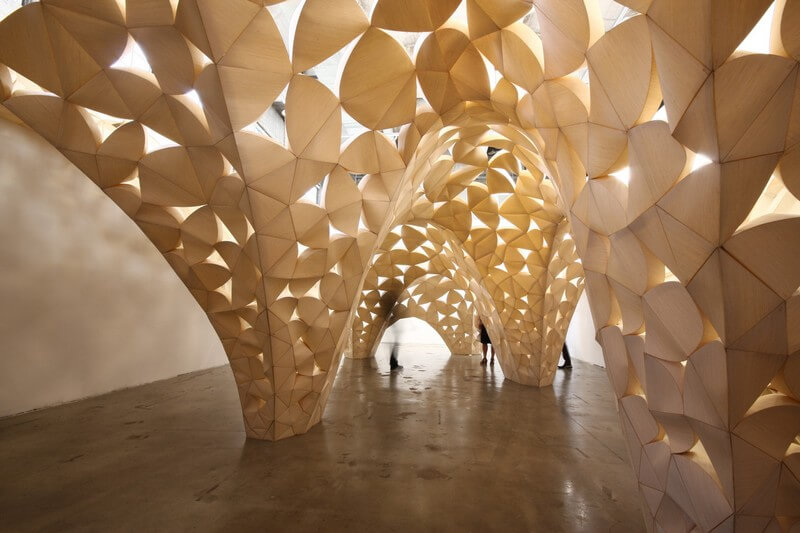
Voussoir Cloud by American architects IwamotoScott explores the structural paradigm of pure compression coupled with an ultra-light material system. The design fills the Southern California Institute of Architecture gallery in Los Angeles with a system of vaults to be experienced both from within and above.
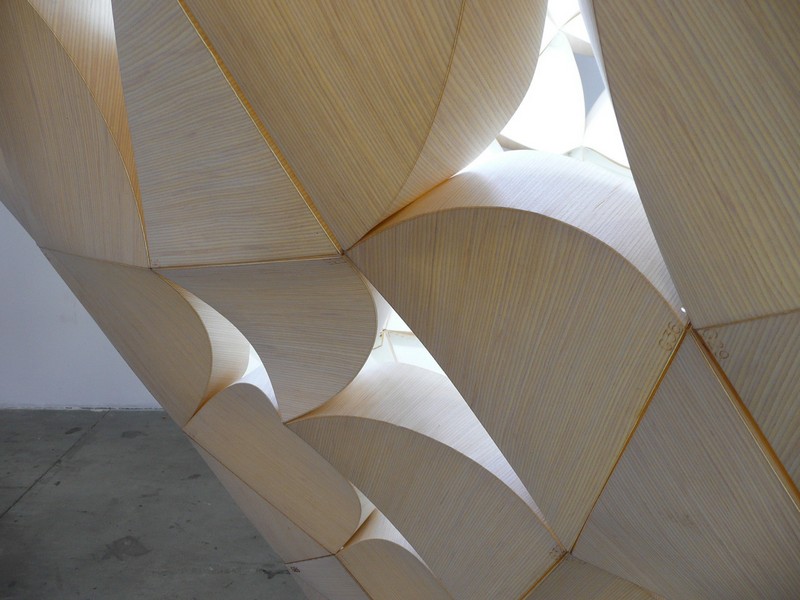
The edges of the vaults are delimited by the entry soffit and the two long gallery walls. The overall design draws from the work of engineer/architects such as Frei Otto and Antonio Gaudi, who used hanging chain models to find efficient form. Designers used both computational hanging chain models to refine and adjust the profile lines as pure catenaries and form finding programs to determine the purely compressive vault shapes.
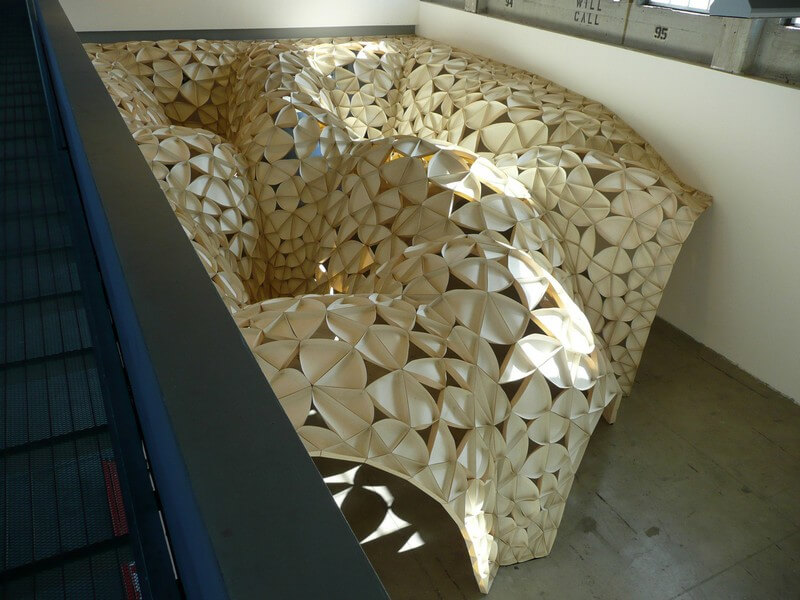
Each vault is comprised of a Delaunay tessellation that both capitalizes on and confounds the structural logic – greater cell density of smaller more connective modules, or petals, gang together at the column bases and at the vault edges to form strengthened ribs, while upper vault shell loosens and gains porosity.
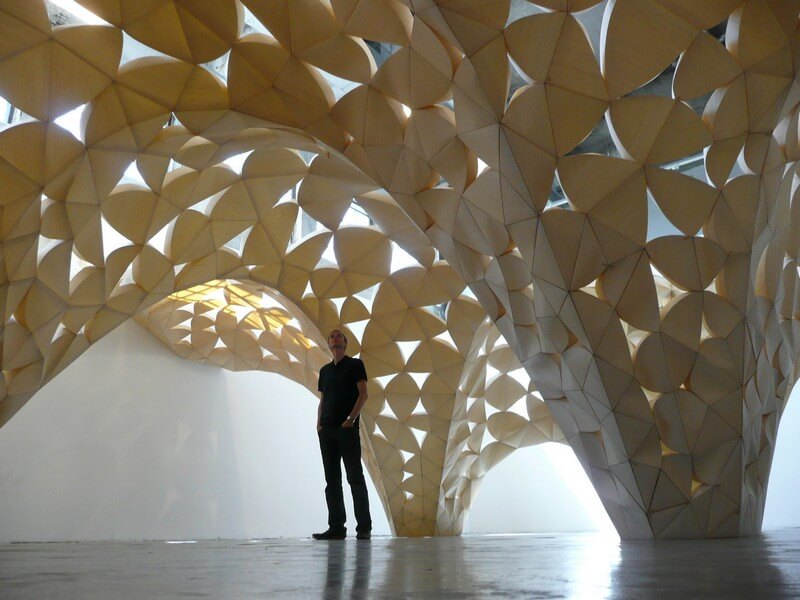
The three dimensional petals are formed by folding thin wood laminate along curve seams. The curve produces an inflected and dished form that relies on the internal surface tension of wood and folded geometry of the flanges to hold its shape.
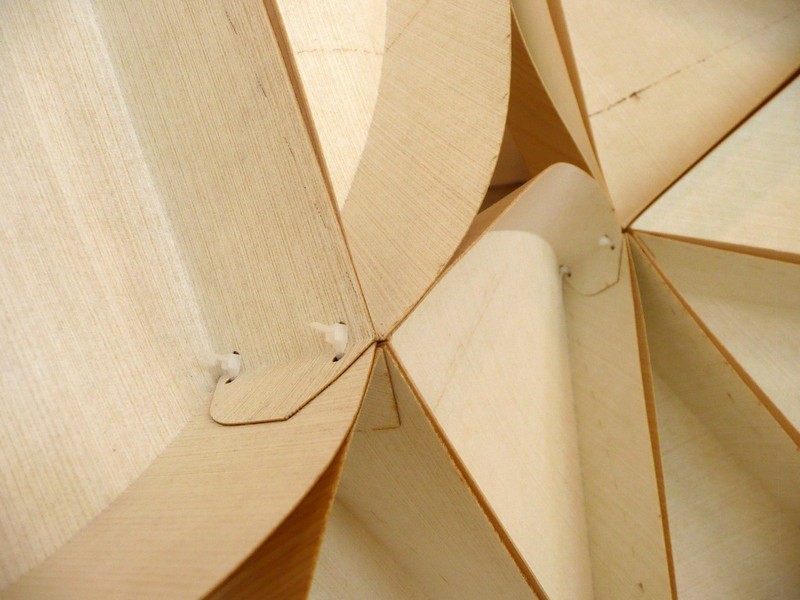
At the same time, materially, the flanges want to bulge out along the curved edges. This is what allows for the structural porosity within the constraints of sheet material. The flanges of the resulting dimpled, concave petals pack together as compressive elements and press upon each other.
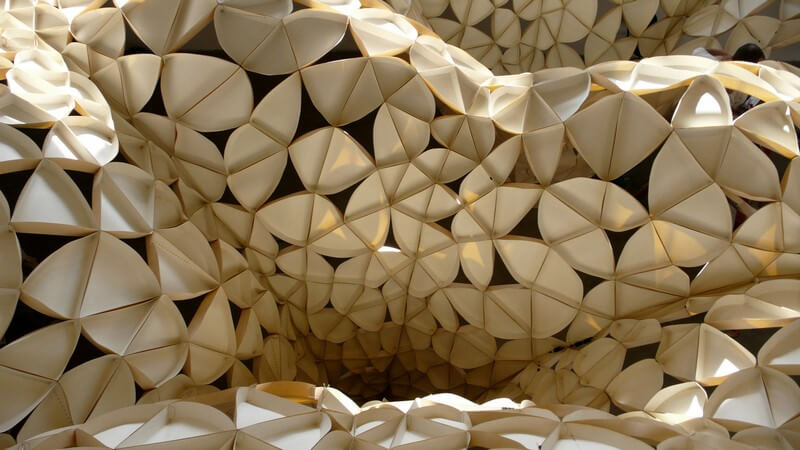
This attribute naturally creates vaulted forms and led initially to the overall design. By beginning with a material operation of folding using small handmade models to test geometric relationships of bending along a curved seam, the design and construction process that followed focused on calibrating the relationship of digital model to physical corollary through iterative empirical testing.

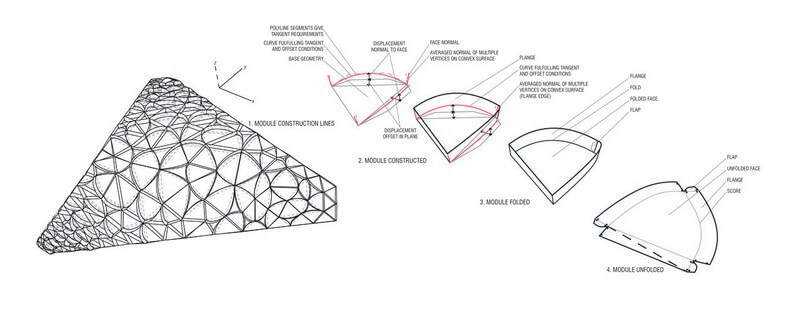




























Comments